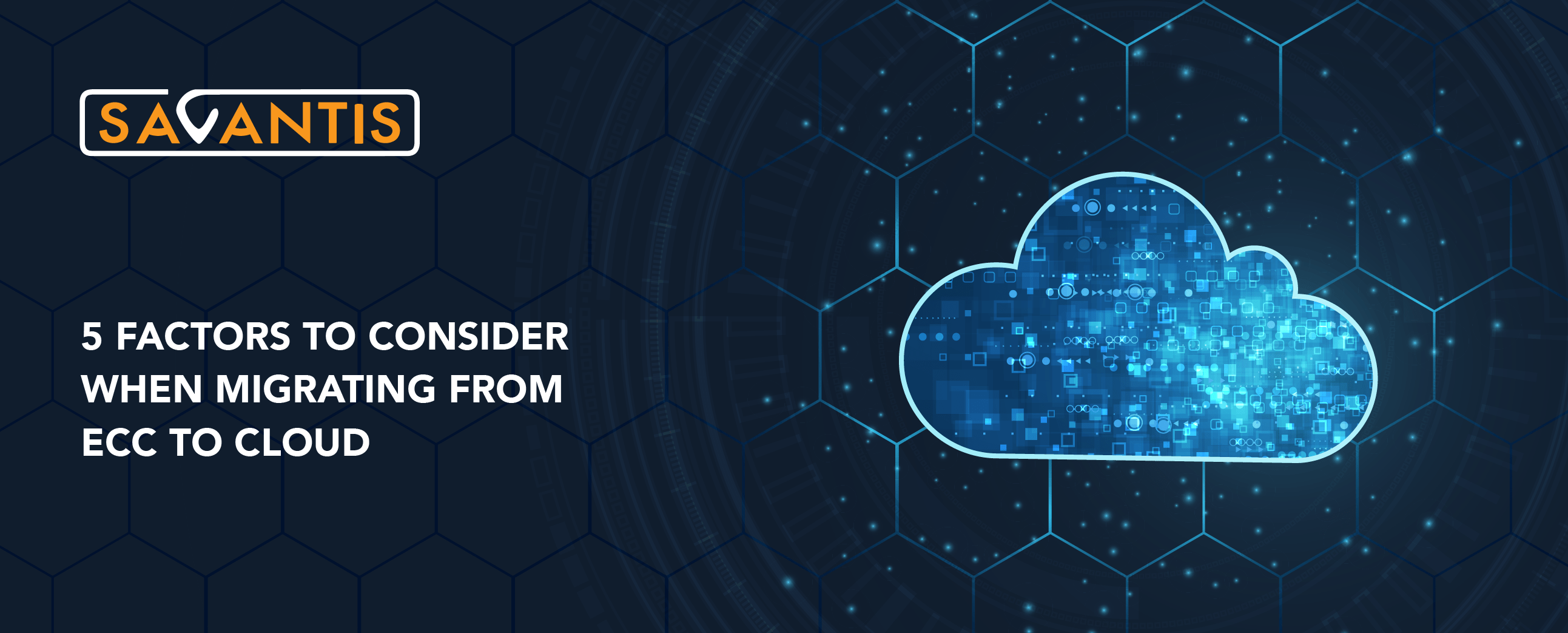Enterprises across the world are now looking to migrate their SAP ECC infrastructure to the cloud. This comes as no surprise, of course.
According to Forbes, 83% of enterprise workload will be in the cloud by 2020.
Modern businesses are increasingly turning towards cloud computing, because it promises a variety of benefits: reduced TCO, flexibility in usage through subscriptions and pay-as-you-go models, automatic software upgrades, improved security measures, ease of accessibility across multiple devices and so much more.
What this means for customers is the ability to achieve expected outcomes rapidly and at affordable costs.
However, migrating to the cloud is not an easy decision to make. And it shouldn’t be. It is crucial that while improved efficiency sounds tempting, business owners must take costs and risks into consideration, before choosing to migrate.
Learn more: Why Existing SAP Customers Should Migrate to SAP S/4HANA
To facilitate the process of decision-making, we have put together five factors SAP ECC customer should consider before they embark on the migration journey. Taking these into account and planning your transition around these factors, before moving all or a part of the IT structure to the cloud will help minimize risks associated with migration.
5 factors to consider when migrating to Cloud:
1. Cloud assessment
When moving towards the cloud, firstly analyze your current IT environment and build strategic goals. There are three types of cloud: private, public or hybrid.
Private cloud provides a dedicated IT infrastructure, using your own hardware and private network, managed by your team or third-party providers.
Public cloud uses an off-site network that is accessible to other customers. It usually offers a pay-per-usage billing model that can save significant amount of money for your business.
Hybrid cloud is a combination of private and public solutions. It is commonly used to manage IT infrastructure to meet requirements for seasonal businesses, or to process applications in a public cloud, while storing the sensitive information in a private environment.
When choosing between these cloud types, ensure that you have a thorough understanding of their features, extensions, bandwidth and storage to find the best fit for your business needs.
Learn more: SAP S/4HANA: On-premise vs. Managed Cloud. Which is right for your Enterprise
2. Cost
Considering the implementation of any system, it is important to estimate your resources and the total cost of ownership (TCO). Not all cloud computing platforms follow a transparent pay-as-you-use costing model. Companies should be aware that for some cloud-based platforms costs of implementation and integration into the IT infrastructure might be higher than expected. Thus, when planning, the budget should include the declared price per user and the price per usage.
3. Reliable provider
The next important factor is to choose a reliable cloud solution provider (CSP) before investing time and money in integration to the cloud. Analyze the compatibility of technical, governance and language standards of the potential provider to your company internal standards. Ensure your provider is a certified partner with deep experience and is aware not only how an application works, but also how various components integrate with each other. The right provider has to guarantee software support to quickly eliminate issues and assure the safety of data 24/7.
Learn more: 6 Tips to Choosing the Right SAP Support and Maintenance Provider
4. Time
The next important factor is to assess the time required for data migration. Evaluate time investment for testing before and after migration. As you are preparing your organization for the transition, consider the availability of resources, governance, efficiency, application design etc. These things do tend to get delayed, due to compliance issues, low productivity and security problems, that an enterprise experiences. It’s important to have appropriate estimates so you are able to mitigate unexpected increases in budgets. We talk more about how to support smooth SAP S/4HANA migration here.
5. Security
One of the biggest concerns enterprises have about adopting a new cloud-based system is the fear of data loss and leakage. According to Forbes, 66% of IT professionals say security is their most significant concern in adopting an enterprise cloud computing strategy.
It’s important to find the right partner to ensure that your security concerns are addressed and that your data is safe in the cloud.
SAP Cloud has proactive, preventative and analytic controls that measure threat & vulnerability detection and continuous security monitoring to protect your intellectual property.
Schedule a call with one of our experts to get more information about SAP Cloud services.
Conclusion
Are you thinking about moving your ECC infrastructure to the cloud? If yes, then it is essential to create a comprehensive strategy and prepare your organization for data migration. We recommend this readiness check of your current system.
Taking the 5 factors mentioned above, you can determine the appropriate cloud service provider best suited for your business and technology needs to successfully adopt modern cloud solutions in the digital economy. Savantis, an SAP-certified partner, believes that SAP is in top ten Cloud platforms in the world for 2018.


